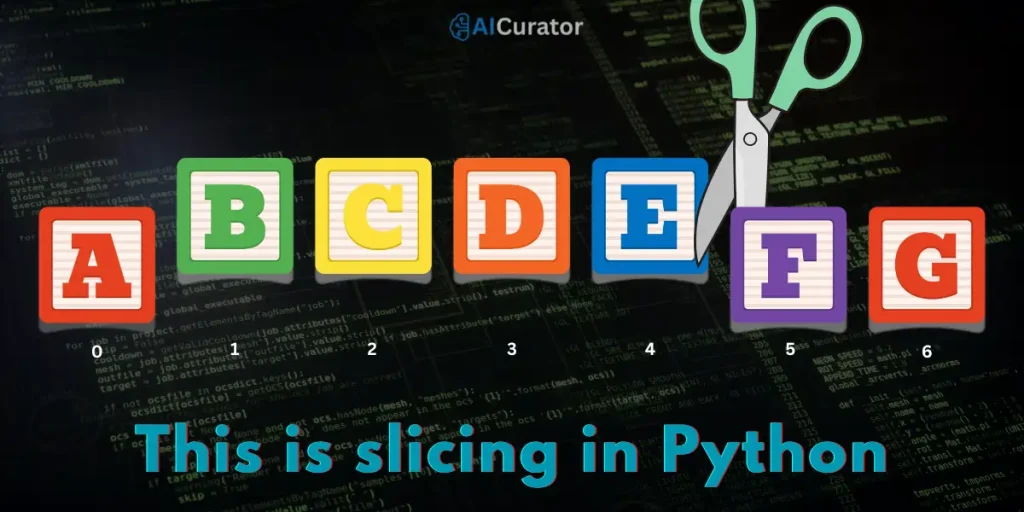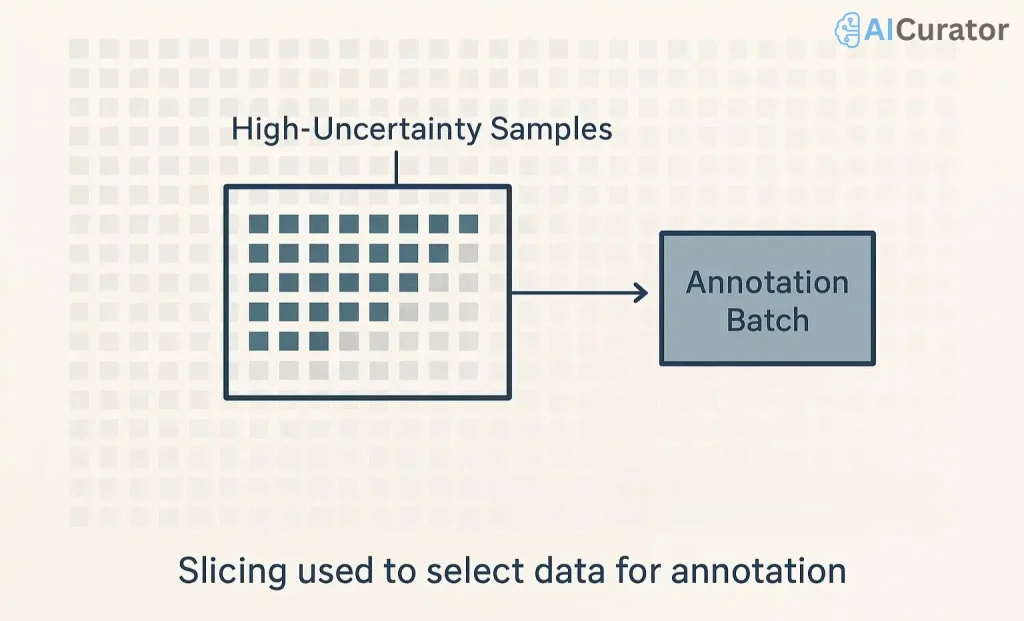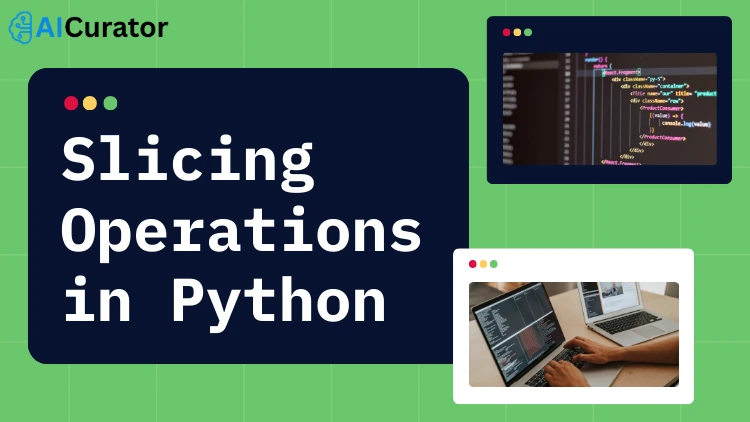Slicing operations in Python are more than a handy shortcut—they’re a core skill for anyone working with data, building ML workflows, or developing in Python. If you're a data scientist, AI practitioner, SaaS developer, or just aiming to write cleaner and faster code, understanding slicing can save both time and effort.
This guide covers slicing across key Python data types, includes practical examples, and shares useful techniques for advanced cases like NumPy arrays and Pandas DataFrames. Let’s get into it.
What is Slicing Operations in Python?
Slicing is Python’s way of letting you extract a chunk-a sub-sequence-from a sequence like a list, string, tuple, array, or even a DataFrame.

Instead of looping or manual indexing, you can grab the bits you need with a single line. The syntax is simple:
python
sequence[start:stop:step]You can also use the slice() function to create reusable slice objects, which is a lifesaver in more complex scenarios.
Slicing Basics: Lists, Strings, and Tuples
Let’s start with the bread and butter of Python slicing.
Slicing Lists
python
numbers = [10, 20, 30, 40, 50, 60]
print(numbers[1:4]) # [20, 30, 40]
print(numbers[:3]) # [10, 20, 30]
print(numbers[::2]) # [10, 30, 50]Slicing Strings
Strings work just like lists:
python
text = "Python Slicing"
print(text[7:]) # "Slicing"
print(text[::-1]) # "gnicilS nohtyP"Slicing Tuples
Tuples are immutable, but you can still slice them:
python
colors = ("red", "green", "blue", "yellow")
print(colors[:2]) # ('red', 'green')Real-World Example: Extracting Recent Logs
python
logs = load_large_dataset()
recent_logs = logs[-1000:] # Grab the last 1,000 entriesThis approach keeps your memory footprint low and your code snappy.
Advanced Slicing: Negative Indices, Steps, and the slice() Function
Negative Indices
Negative indices count from the end:
- -1 is the last item, -2 is the second last, and so on.
python
my_list = [10, 20, 30, 40, 50]
print(my_list[-4:-1]) # [20, 30, 40]This trick is gold for reverse traversals or when you don’t want to mess with len().
Steps for More Control
The third parameter (step) lets you skip or reverse elements:
python
my_list = [10, 20, 30, 40, 50, 60, 70, 80, 90, 100]
print(my_list[1:8:3]) # [20, 50, 80]
print(my_list[::-1]) # [100, 90, ..., 10] (reversed)You can even combine all three for serious slicing power.
The slice() Function
For reusable, dynamic slicing, slice() is your friend:
python
my_slice = slice(2, 5)
data_list = [100, 200, 300, 400, 500]
data_string = "SlicingExample"
print(data_list[my_slice]) # [300, 400, 500]
print(data_string[my_slice]) # "ici"This is perfect when you want to apply the same slice to multiple sequences or tweak boundaries in one place.
Slicing Beyond the Basics: Edge Cases & Gotchas
Omitting Parameters
Leave out start, stop, or step for defaults:
python
numbers = [10, 20, 30, 40, 50, 60]
print(numbers[:4]) # [10, 20, 30, 40]
print(numbers[2:]) # [30, 40, 50, 60]
print(numbers[:]) # [10, 20, 30, 40, 50, 60]Slicing Out of Bounds
Python won’t throw an error if your slice goes beyond the sequence:
python
numbers = [10, 20, 30, 40, 50, 60]
print(numbers[4:15]) # [50, 60]This makes your code more robust and less error-prone.
Deleting with Slicing
You can nuke sections of a list with slicing:
python
numbers = [2, 4, 5, 12, 64, 45]
numbers[1:4] = []
print(numbers) # [2, 64, 45]Neat for quick data cleanup.
Slicing Multi-Dimensional Data: NumPy Arrays
NumPy arrays are the backbone of most AI and ML workflows. Slicing works just as intuitively, but with more power:
1D Array Slicing
python
import numpy as np
arr = np.array([10, 20, 30, 40, 50, 60])
print(arr[1:4]) # [20 30 40]
print(arr[::2]) # [10 30 50]2D Array Slicing
python
arr_2d = np.array([[10, 20, 30], [40, 50, 60], [70, 80, 90]])
print(arr_2d[1:2, 1:3]) # [[50 60]]This lets you split data into features and labels, or create train/test splits in a single line-no loops needed.
Example: Splitting Features and Labels
python
data = np.array([[11, 22, 33], [44, 55, 66], [77, 88, 99]])
X, y = data[:, :-1], data[:, -1]
print(X) # [[11 22], [44 55], [77 88]]
print(y) # [33 66 99]Example: Train/Test Split
python
split = 2
train, test = data[:split, :], data[split:, :]
print(train) # [[11 22 33], [44 55 66]]
print(test) # [[77 88 99]]These patterns are everywhere in ML codebases.
Slicing in Pandas DataFrames
Pandas brings slicing to tabular data. You’ll use .iloc for integer-based slicing and .loc for label-based slicing.
Row Slicing with iloc
python
import pandas as pd
df = pd.DataFrame({'A': [1,2,3,4,5], 'B': [10,20,30,40,50]})
print(df.iloc[:3])
# A B
# 0 1 10
# 1 2 20
# 2 3 30Conditional Slicing with loc
python
print(df.loc[df['A'] > 2])
# A B
# 2 3 30
# 3 4 40
# 4 5 50This is a staple for filtering and prepping data for ML models.
Slicing Byte Sequences
Working with binary data? Python’s bytes and bytearray support slicing too:
python
byte_seq = b'Hello, world!'
print(byte_seq[:5]) # b'Hello'
byte_arr = bytearray([10, 20, 30, 40, 50, 60])
print(list(byte_arr[2:5])) # [30, 40, 50]This is crucial for parsing files, network packets, or any binary protocol.
Pro Tips and Common Pitfalls
- Default values: Omitting
start,stop, orstepuses defaults (start=0, stop=len(seq), step=1). - Negative indices: Use them to slice from the end-no need for
len(). - Step values: Negative steps reverse sequences, positive steps skip elements.
- slice() objects: Great for reusable or dynamic slicing logic, especially in functions or classes.
- No IndexError: Slicing out of bounds returns an empty sequence or the largest valid slice-no crashes.
- Works across types: Lists, strings, tuples, arrays, DataFrames, bytes-slicing is universal in Python.
Slicing in Machine Learning and AI Workflows
In ML and AI, slicing pops up everywhere:
- Data cleaning: Remove unwanted rows/columns in a snap.
- Feature engineering: Select subsets of features or samples.
- Batch processing: Efficiently split data into batches for training.
- RAG and LLM workflows: Slice context windows, prompt chunks, or candidate documents for retrieval-augmented generation.
Example: Slicing in a Data Annotation Pipeline

Suppose you’re building an active learning loop for data annotation (think Cleanlab or Adala). You’ll often slice your dataset to prioritise high-uncertainty samples, select batches for annotation, or filter out noisy labels-all with a single slice operation.
Slicing vs. Indexing: Quick Comparison
| Feature | Indexing | Slicing |
|---|---|---|
| Syntax | seq[i] | seq[start:stop:step] |
| Returns | Single element | Sub-sequence (same type) |
| Out-of-bounds | Raises error | Returns empty or valid sub-seq |
| Supports steps | No | Yes |
| Negative indices | Yes | Yes |
| Use case | Access/assign | Extract, delete, reverse, sample |
Final Thoughts: Why Slicing Matters
Slicing Operations in Python deliver a powerful mechanism for concise, readable, and resilient data handling. Embedded throughout AI, ML, and data science workflows, slicing ranges from simple list segments to advanced NumPy and Pandas extraction. Proficiency in slicing elevates both code clarity and development speed.
Key Takeaways
- Slicing is universal: works on lists, strings, tuples, arrays, DataFrames, bytes, and more.
- Use negative indices and steps for reverse or end-based operations.
- The
slice()function unlocks reusable, dynamic slicing logic. - Slicing is safe: no IndexErrors, even when you go out of bounds.
- Essential for AI, ML, and data engineering-batching, feature selection, and more.
Ready to level up your Python game? Start slicing and dicing your data like a pro!
Want more AI, ML, and Python tips? Stick around for more guides, code recipes, and workflow hacks from the world of GenAI, LLMs, and beyond!
















